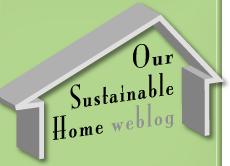February 26th, 2008
The sharp minds as Sharp are developing a battery system designed just for home power generators. While some mentioned in this article seem to feel most will not have any interest in the batteries, I think they are underestimating how much people like the idea of living off the grid, and sustaining themselves as much as possible.
In addition (and as mentioned here previously) the power inversion process of converting solar DC power to AC for the grid absorbs about 20-25% of the power generated. By keeping the power at home, one has the option of installing DC power appliances and light fixtures (though some AC conversion would obviously still be needed periodically until the marketplace gets used to people having DC power in the home).
Posted by
February 10th, 2008
A new option has presented itself to us for the framing of the house.
We had initially planned on using Insulating Concrete Forms (ICFs) for the foundation walls of the house, but it has been suggested by a number of people that we may want to consider using ICFs for the entire shell. Some of the benefits include
- Longer lasting and more durable than wood-frame construction
- Fire resistant
- Termite proof
- Improved sound resistance
- Highly insulative
- Extremely low thermal bridging
We’re still working out what the cost of switching from the high-efficiency wall design we have now to an ICF would be, but we think it’s an excellent candidate.
We recognize there may be added embodied energy from using so much concrete, but if the house will stand for 1000 (?) years instead of 100-200 years for a wood-frame house, that seems worthwhile.
Our current ICF of choice would be Durisol, since they use recycled materials instead of styrofoam to structure the wall, and additional insulation is provided by mineral wool (Roxul).
Posted by
